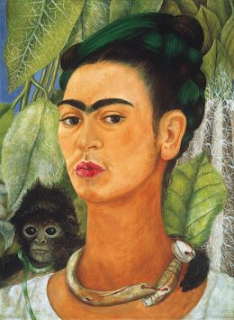I'm trying to improve my chapati technique for an upcoming Foodie dinner I'm hosting in February, so I made up a batch of dough with intentions to practice rolling on Sunday. That night we ended up eating the leftover home-made pasta chef Roberto made on Friday.
I totally forgot about the little ball of dough I'd set aside on the counter. So the chapati dough ended up wrapped in the fridge Sunday night. Monday night came and went, and I forgot to include them on the menu again. Tuesday night we wouldn't even be eating home. Not wanting my kneading going to waste, Tuesday morning I was rolling the dough for a savory breakfast. What a great start to the day.
Warm flatbread with pear/ginger chutney. Delicious!
 |
| amoeba and other protozoa |
A happy discovery, to know I can prep ahead and roll as desired, storing 2-3 days in the fridge. Now I can make the dough ahead and have a tasty breakfast or lunch in no time flat!
For the foodie dinner, I'm thinking of having guests 'roll their own'. Being sailors like us, they may agree it is perfect for cruising, too.
Recipe
- About 2 cups atta flour (or mix all-purpose with whole wheat), plus extra for rolling (sift if you are a purist)
- 1 tsp salt
- ~ 1 cup of warm water
In a medium bowl, mix together the two cups of flour. Make a well in the middle. Add 1 cup warm water (slowly). Mix with your hand or a spoon until you can gather the mixture into a ball. Knead for 8-10 minutes o a floured surface. Let stand 3-12 hours or put in the fridge 2-3 days until ready to use (cover tightly with plastic wrap to help it last longer in the fridge).
To use, tear off enough dough to make a golf-ball size and roll out into circles. If taking from the fridge warm it up a bit in the palm of your hands first.
Roll out from the centre. Flip the dough over from one side to the next to help make circles. You decide how big... 5"? 7"?
Heat a bit of oil in a cast iron pan. Cook 15 seconds or so, then flip over until you see little brown bubbles starting to form (about 1 minute). At this point I took it and toasted it over the gas burner flame, watching it puff up, like magic.
I like this guy's technique. Perfect circles!


































